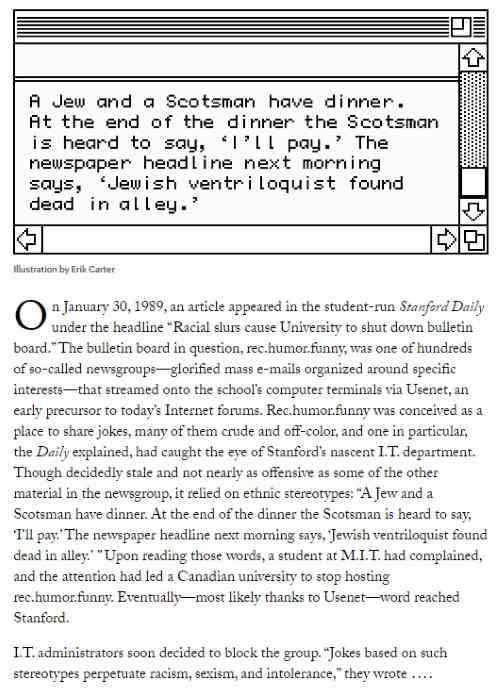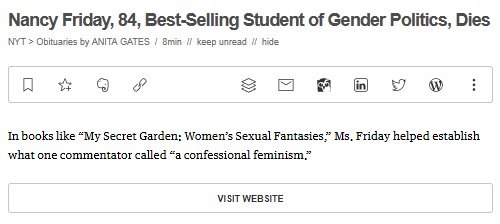Thursday, November 30, 2017
"Archimedes thought that he could move the world
if only he could get outside of it, and the same idea
inspires writers in the transcendental genre of fiction.
Find some place sufficiently far out and put your fulcrum there."
— The late Jerry Fodor, who reportedly died on Nov. 29, 2017
Comments Off on Far Out
Scholia on the title — See Quantum + Mystic in this journal.

The Matrix of Lévi-Strauss —

"In Vol. I of Structural Anthropology , p. 209, I have shown that
this analysis alone can account for the double aspect of time
representation in all mythical systems: the narrative is both
'in time' (it consists of a succession of events) and 'beyond'
(its value is permanent)." — Claude Lévi-Strauss, 1976
I prefer the earlier, better-known, remarks on time by T. S. Eliot
in Four Quartets , and the following four quartets (from
The Matrix Meets the Grid) —
 .
.
From a Log24 post of June 26-27, 2017:
A work of Eddington cited in 1974 by von Franz —

See also Dirac and Geometry and Kummer in this journal.
Ron Shaw on Eddington's triads "associated in conjugate pairs" —

For more about hyperbolic and isotropic lines in PG(3,2),
see posts tagged Diamond Theorem Correlation.

For Shaw, in memoriam — See Contrapuntal Interweaving and The Fugue.
Comments Off on The Matrix for Quantum Mystics
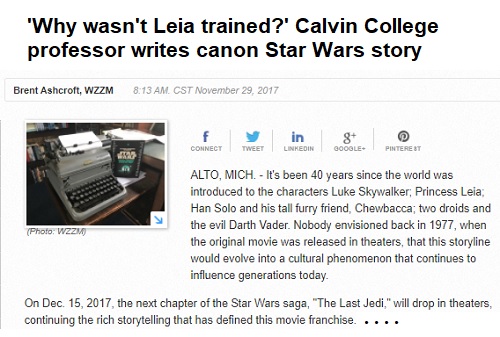
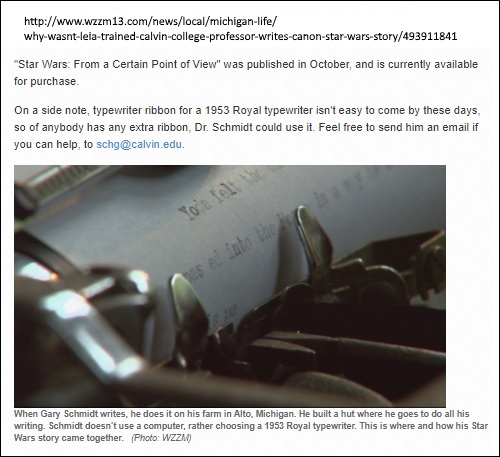
For those who prefer mathematics to narrative —


Comments Off on Typewriter Wars
Wednesday, November 29, 2017

See also Inscape in this journal and, for a related Chapel Hill thesis,
the post Kummer and Dirac.
Comments Off on Definitions
Or: "Use the Source, Luke"


Comments Off on The Beacon
The concluding instance of a search for "the room"
in this journal (from Mike Nichols's birthday, 2002) —
"His visitor sat upright, oppressed by the silence,
acutely conscious that the doors to the room were locked."
— Recreation by Sylvia Nasar of a scene starring
mathematicians George Mackey and John Nash.
The reviews are in!
See also today's previous post, Perhaps Not Strange Enough.
Comments Off on The Room
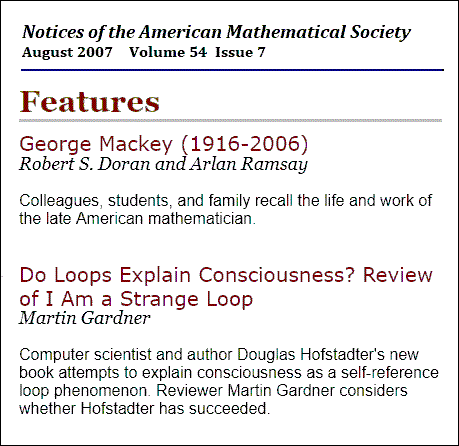
See also Mackey + Nash in this journal.
Comments Off on Perhaps Not Strange Enough
Tuesday, November 28, 2017
Comments Off on Comedy from a Cartoon Graveyard
"An awful lot of important dualities in four and fewer dimensions
follow from this six-dimensional theory and its properties."
— Edward Witten, interviewed by Natalie Wolchover,
in Quanta Magazine on November 28, 2017
See also Six Dimensions in this journal.
Comments Off on For Quantum Mystics
Monday, November 27, 2017
Comments Off on Aesthetic Qualities
Reference —
Hansen, Robert Peter, "Construction and Simplicity of
the Large Mathieu Groups" (2011). Master's Theses. 4053.
http://scholarworks.sjsu.edu/etd_theses/4053.
See also The Matrix Meets the Grid (Log24, Nov. 24).
More generally, see SPLAG in this journal.
Comments Off on The Golay Code via Witt’s Construction
Sunday, November 26, 2017
The Linotype Fixer
( Sequel to "The Typewriter Fixer" * )
From The Hollywood Reporter on Tuesday, Nov. 7, 2017 —

* "The Typewriter Fixer" refers to a typewriter repair shop
on New York's Upper West Side —

The Hollywood Reporter 's promotional piece above is from
Tuesday, November 7, 2017. For another meditation suited to
the Upper West Side, see this journal on that date —
Comments Off on Upper West Side Story:
Saturday, November 25, 2017
The previous post suggests a review of remarks by Adam Gopnik
in The New Yorker on February 27, 2017 on "The Matrix" hypothesis—
"The thesis that we are in a simulation is, as people who
track such things know—my own college-age son has
explained it to me—far from a joke, or a mere conceit.
The argument, actually debated at length at the
American Museum of Natural History just last year, is that
the odds are overwhelming that ours is a simulated universe.
The argument is elegant."
No, it is not.
See as well my own remarks on the date of the above museum debate —
Tuesday, April 5, 2016.
From those remarks, a Halloween 2014 image that provides a
companion-piece to the "Easy E" of today's previous post —

Comments Off on Night at the Museum
German mathematician Wolf Barth reportedly died
on December 30, 2016.
Flashback to this journal on that date * —
* And, of course, to the later post Easy E for Cullinan (Feb. 28, 2017).
Cullinan, second from left below, is the now-famous Oscars accountant.

Comments Off on E-Elements
Friday, November 24, 2017
From this evening's online New York Times :
"Eric Salzman, a composer and music critic who
championed a new art form, music theater,
that was neither opera nor stage musical, died
on Nov. 12 at his home in Brooklyn. He was 84."
. . . .
"The first American Music Theater Festival
took place in the summer of 1984.
Among that first festival’s featured works was
'Strike Up the Band!,' Mr. Salzman’s 'reconstructed
and adapted' version of a satirical musical
with a score by George and Ira Gershwin
that had not been staged in 50 years. The director
of that production, Frank Corsaro, died
the day before Mr. Salzman did."
Synchronology check :
"The day before" above was November 11, 2017.
Links from this journal on November 11 —
A Log24 search for Michael Sudduth and an
October 28, 2017, Facebook post by Sudduth.
Detail of Sudduth's Nov. 11 Facebook home page —

Click the above for an enlarged view of the Sudduth profile picture.
Related material :

Aooo.
Comments Off on Scholia

Adelman reportedly died on Wednesday, November 22, 2017.
Comments Off on The Typewriter Fixer
The Matrix —

The Grid —

Picturing the Witt Construction —

"Read something that means something." — New Yorker ad
Comments Off on The Matrix Meets the Grid
Thursday, November 23, 2017
David Brooks in The New York Times today —
"We once had a unifying national story, celebrated each Thanksgiving.
It was an Exodus story. Americans are the people who escaped oppression,
crossed a wilderness and are building a promised land. The Puritans brought
this story with them. Each wave of immigrants saw themselves in this story.
The civil rights movement embraced this story.
But we have to admit that many today do not resonate with this story. . . .
Today, we have no common national narrative, no shared way
of interpreting the flow of events. Without a common story,
we don’t know what our national purpose is. We have no
common set of goals or ideals.
We need a new national narrative."
From a post of August 15, 2010 —

For some background, see Java Jive and Today's Theology.
Related readings —
From 1928:

From the previous post:
"Thus, instead of Propp's chronological scheme,
in which the order of succession of events
is a feature of the structure . . .
another scheme should be adopted, which would present
a structural model defined as the group of transformations
of a small number of elements. This scheme would appear
as a matrix . . . ."
— Claude Lévi-Strauss, 1960

Comments Off on The Matrix
| Claude Lévi-Strauss
From his “Structure and Form:
Reflections on a Work by Vladimir Propp” *
To maintain. as I have done. that the permutability of contents is not arbitrary amounts to saying that, if the analysis is carried to a sufficiently deep level, behind diversity we will discover constancy. And, of course. the avowed constancy of form must not hide from us that functions are also permutable.
The structure of the folktale as it is illustrated by Propp presents a chronological succession of qualitatively distinct functions. each constituting an independent genre. One can wonder whether—as with dramatis personae and their attributes— Propp does not stop too soon, seeking the form too close to the level of empirical observation. Among the thirty-one functions that he distinguishes, several are reducible to the same function reappearing at different moments of the narrative but after undergoing one or a number of transformations . I have already suggested that this could be true of the false hero (a transformation of the villain), of assigning a difficult task (a transformation of the test), etc. (see p. 181 above), and that in this case the two parties constituting the fundamental tale would themselves be transformations of each other.
Nothing prevents pushing this reduction even further and analyzing each separate partie into a small number of recurrent functions, so that several of Propp’s functions would constitute groups of transformations of one and the same function. We could treat the “violation” as the reverse of the “prohibition” and the latter as a negative transformation of the “injunction.” The “departure” of the hero and his “return” would appear as the negative and positive expressions of the same disjunctive function. The “quest” of the hero (hero pursues someone or something) would become the opposite of “pursuit” (hero is pursued by something or someone), etc.

In Vol. I of Structural Anthropology , p. 209, I have shown that this analysis alone can account for the double aspect of time representation in all mythical systems: the narrative is both “in time” (it consists of a succession of events) and “beyond” (its value is permanent). With regard to Propp’s theories my analysis offers another advantage: I can reconcile much better than Propp himself his principle of a permanent order of wondertale elements with the fact that certain functions or groups of functions are shifted from one tale to the next (pp. 97-98. p. 108) If my view is accepted, the chronological succession will come to be absorbed into an atemporal matrix structure whose form is indeed constant. The shifting of functions is then no more than a mode of permutation (by vertical columns or fractions of columns).
These critical remarks are certainly valid for the method used by Propp and for his conclusions. However. it cannot be stressed enough that Propp envisioned them and in several places formulated with perfect clarity the solutions I have just suggested. Let us take up again from this viewpoint the two essential themes of our discussion: constancy of the content (in spite of its permutability) and permutability of functions (in spite of their constancy).
* Translated from a 1960 work in French. It appeared in English as Chapter VIII
of Structural Anthropology, Volume 2 (U. of Chicago Press, 1976). Chapter VIII
was originally published in Cahiers de l’Institut de Science Économique Appliquée ,
No. 9 (Series M, No. 7) (Paris: ISEA, March 1960).
|
See also “Lévi-Strauss” + Formula in this journal.
Some background related to the previous post —

Comments Off on Lévi-Strauss vs. Propp
Wednesday, November 22, 2017
David E. Wellbery on Goethe
From an interview published on 2 November 2017 at
http://literaturwissenschaft-berlin.de/interview-with-david-wellbery/
as later republished in
https://thepointmag.com/2017/dialogue/
irreducible-significance-david-wellbery-literature-goethe-cavell —

The logo at left above is that of The Point .
The menu icon at right above is perhaps better
suited to illustrate Verwandlungslehre .

Comments Off on Goethe on All Souls’ Day
Comments Off on The Prize
News item from this afternoon —

The above phrase "mapping systems" suggests a review
of my own very different "map systems." From a search
for that phrase in this journal —

See also "A Four-Color Theorem: Function Decomposition
Over a Finite Field."
Comments Off on “Design is how it works” — Steve Jobs
Tuesday, November 21, 2017
Wikipedia on a figure from the previous post —
" Antonelli was recognized with an AIGA Medal in 2015
for 'expanding the influence of design in everyday life
by sharing fresh and incisive observations and
curating provocative exhibitions at MoMA'.[4] She was
rated one of the one hundred most powerful people in
the world of art by Art Review and Surface Magazine.[5] "
Speaking of exhibitions —

Comments Off on Provocative Exhibitions
Monday, November 20, 2017
Washington Post dateline . . .
November 20 at 6:34 PM
Address . . .
https://www.washingtonpost.com/investigations/
eight-women-say-charlie-rose-sexually-harassed-them–
with-nudity-groping-and-lewd-calls/2017/11/20/ . . .
See also Charlie Rose in this journal.
The only post found in a Log24 search for "Charlie Rose" is about
his May 7, 2008, interview with a Museum of Modern Art figure,
Paola Antonelli. A more recent appearance by Antonelli —


Synchronolgy check — Log24 on the date 5 June 2012.
* Title and wording of post revised the following day.
Comments Off on Dating Charlie*
Made-up quote from an imaginary celebrity
in today's online New York Times —
"Lighten up and enjoy the act, snowflake."
Related material —
Ending Credits, a Log24 post of Jan. 26, 2015.
Comments Off on Snowflake
Sunday, November 19, 2017
In memory of a Brooklyn art figure who reportedly killed himself
on November 9, 2017 —
From an obituary linked to here in a post, "Information from the Middle
of the Night," at 2:02 AM ET on June 23, 2017 —
"In 1976, Ms. DeAk, with Mr. Robinson, Sol LeWitt and
Lucy Lippard, helped found Printed Matter, a publisher
and distributor of artists’ books."
"A version of this article appears in print on June 23, 2017,
on Page B15 of the New York edition with the headline:
Edit DeAk, a Champion of Artists Outside the Mainstream,
Dies at 68."
Related material —

Comments Off on Nightmare for Midsummer

This is a sequel to yesterday's post Cube Space Continued.
Comments Off on Galois Space
Suggested by the previous post …
Wikipedia —
" 'Dark Horse' is a song recorded by American singer
Katy Perry featuring rapper Juicy J. It was originally
released on September 17, 2013, by Capitol Records
as the first promotional single from Perry's fourth
studio album, Prism (2013)."
See also a link from the above date in this journal —
"In the Neighborhood of Mathematical Space,"
by Karen Shenfeld (1993).
Comments Off on Other Entertainment
"New to the series are the Trials of the Gods events
that pit players against Ancient Egyptian gods."
— Review of the new game Assassin's Creed: Origins
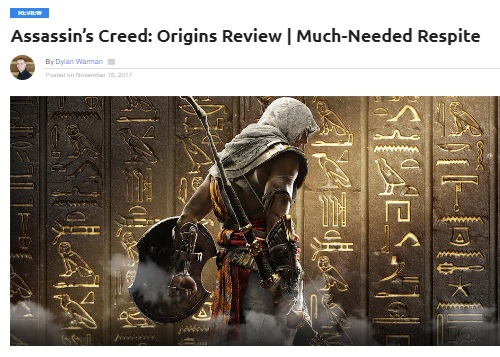
"How much story do you want?" — George Balanchine

Comments Off on Review
Saturday, November 18, 2017
Comments Off on Cube Space Continued
Thursday, November 16, 2017
The title, which of course means "Prayer,"
may also mean "Smartphone" — See
other Log24 posts tagged Orisons.

Detail from a Log24 post on May 21, 2005 —

Comments Off on Orison
Comments Off on A Line at Infinity

Related material —
The following image in this journal —
 .
.
Comments Off on Lost Horizon
Wednesday, November 15, 2017

— Cloud Atlas , by David Mitchell (2004).
See also the previous post as well as
other posts now tagged Orisons.
Comments Off on Orison as Smartphone

Midrash from
http://www.online-literature.com/forums/
showthread.php?16457-Decoding-Shakespeare —
"It's an extremely complicated scene that needs a great deal of discussion
to fully appreciate. But essentially, Hamlet is arguing 'beauty' versus 'truth.'
And notice that Hamlet bases his whole argument on how beautiful Ophelia is,
as he sees her. There's the old saying, and it's perfectly true, that beauty is in
the eye of the beholder. As Hamlet looks at Ophelia, she's the most beautiful
thing he ever saw.
So we know how Hamlet feels about Ophelia, no matter what he says. When
he says he doesn't love her, he's lying through his teeth. If he didn't love her,
she wouldn't look so beautiful to him.
The Nunnery Scene is one of the great scenes in all of literature, and it's
beastly intricate and complicated. It's Hamlet's logical argument about truth
versus beauty, and as he says it to Ophelia, he's lyin' like a dog."
— "Amleth," 03-28-2006, 08:55 PM
See also this journal on that date.
Comments Off on In Thy Orisons
Tuesday, November 14, 2017
Published today —
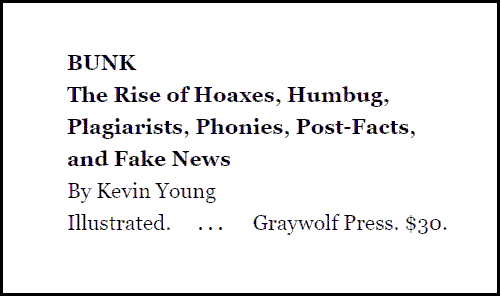
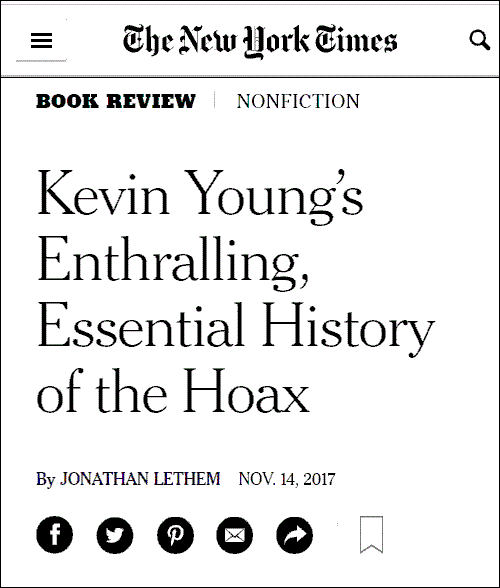
One man's Bunk is another man's Dissident Gardens .
Comments Off on Dissident Bunk
Monday, November 13, 2017
Yale Professors Race Google and IBM to the First Quantum Computer
"So, after summer, in the autumn air,
Comes the cold volume* of forgotten ghosts,
But soothingly, with pleasant instruments,
So that this cold, a children's tale of ice,
Seems like a sheen of heat romanticized."
— Wallace Stevens,
"An Ordinary Evening in New Haven"
* Update of 10:20 the same evening:
|
An alternative to The Snow Queen
as "the cold volume" of Wallace Stevens
On The King in the Window , by Adam Gopnik —
"The book is dedicated to Adam Gopnik's son,
Luke Auden, and his late, great godfathers,
Kirk Varnedoe and Richard Avedon.
'A fantasy that is as ambitious in theme,
sophisticated in setting, and cosmic in scope
as the works of Madeline L'Engle.
The unlikely eponymous hero is Oliver Parker,
an 11-year-old American boy living in Paris
with his mother and journalist father.
After he finds a prize in his slice of cake on
The Night of Epiphany and dons the customary
gilt-paper crown, the boy is plunged into
a battle over nothing less than control of the universe.
His enemy is the dreaded Master of Mirrors,
who rose to power during the reign of Louis XIV,
when Parisians developed technology for making
sheet glass. This faceless, evil being,
capable of capturing souls
through mirrors and enslaving them
in an alternate world that lies beyond all mirrors,
now seeks to dominate the entire universe by
mounting a quantum computer on the Eiffel Tower.
Oliver's mission is to defeat the Master of Mirrors
and save his father's stolen soul.' "
— Description at https://biblio.co.nz/. . . .
|
Comments Off on Plan 9 at Yale
"I wrote another book!" — Harlan Kane
The Crimson Staff

Comments Off on New from Harlan Kane


See also Norbert Wiener in this journal and …

Related material for the Church of Synchronology —
The Log24 post on the above New York Times death date.
Comments Off on In Nomine Patris
Sunday, November 12, 2017
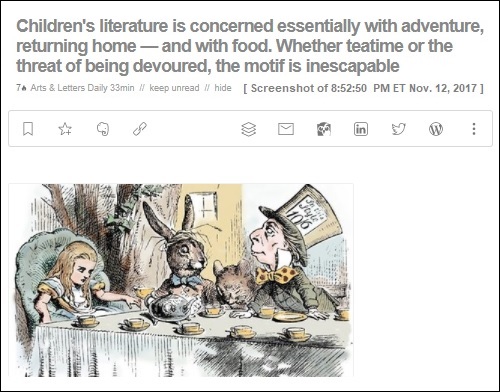
John Malkovich in the closing scene of
the recent film "Unlocked" —
1055
01:31:49,801 –> 01:31:53,301
We have time for a coffee.
There's a pastry shop by the river.
1056
01:31:54,092 –> 01:31:55,842
Excellent strudel.
Comments Off on Alice
|
Sunday, October 29, 2017
Filed under: Uncategorized — m759 @ 2:16 PM

. . . .
"Wikipedia's first true logo . . . . included a quote from the preface
of Euclid and His Modern Rivals by Lewis Carroll . . . ."
. . . .
Related dialogue from the new film "Unlocked" —
1057
01:31:59,926 –> 01:32:01,301
Nice to have you back, Alice.
1058
01:32:04,009 –> 01:32:05,467
Don't be a stranger.
|
See as well Chloë Grace Moretz portraying a schoolgirl problem.
Comments Off on Review

<meta property="article:published" itemprop="datePublished"
content="2017-11-12T12:05:08-05:00" />
Related entertainment —

Comments Off on Meta Property
From the groom in the previous post — Swedenborg Chapel —

And from November 7 last year —
| Monday, November 7, 2016
Filed under: Uncategorized — m759 @ 9:11 PM


Click images for related material. |

“The Cardinal seemed a little preoccupied today.“
Comments Off on Devil’s Music


See a related political note from the bride.
Comments Off on Swedenborg Chapel
Saturday, November 11, 2017
From today's online Wall Street Journal —

A synchronology check of the above 2015 Taylor Swift date —


The above remarks suggest Swift as a possible presidential candidate:
From The Harvard Crimson on Halloween —
 .
.
Comments Off on For Your Consideration

Related material —
Michael Sudduth in this journal and an October 28, 2017,
Facebook post by Sudduth.
Comments Off on Dating
Friday, November 10, 2017

See today's New York Times Rogin obituary.
"What happens next?"
Good question.
See also this journal on November 4.
Comments Off on The Rogin Gambit

Influenz , by Paul Klee —

Comments Off on Influenz
(Click to enlarge.)

For the paper on Steiner systems, see the bibliographic link in
the previous Log24 post.
See as well Cameron's posts before and after his post above:
← A sun dog Core paths → .
Comments Off on A Mathematician’s Apology
From Cambridge Core, suggested by a reference to
that website in the previous post and by the following
bibliographic data . . .
https://doi.org/10.1017/fmp.2016.5
Downloaded from https://www.cambridge.org/core
on 10 Nov 2017 at 19:06:19

See Conwell + Princeton in this journal.
Related art —

Comments Off on Annals of Rarefied Scholarship
“Johann Georg Hamann (1730-88) is, by any measure, an obscure figure,
little known outside the exclusive circles of a certain very rarefied kind of
scholarship, hardly read at all even in his native Germany, and perhaps
truly understood by next to no one. And yet . . . .”
— “The Laughter of the Philosophers,” by David Bentley Hart,
First Things , January 2005
Update at 7 the same morning . . .
Meanwhile, back in 1963 —

… and at 7:15 the same morning, from a different Cambridge —

Comments Off on Style
Thursday, November 9, 2017
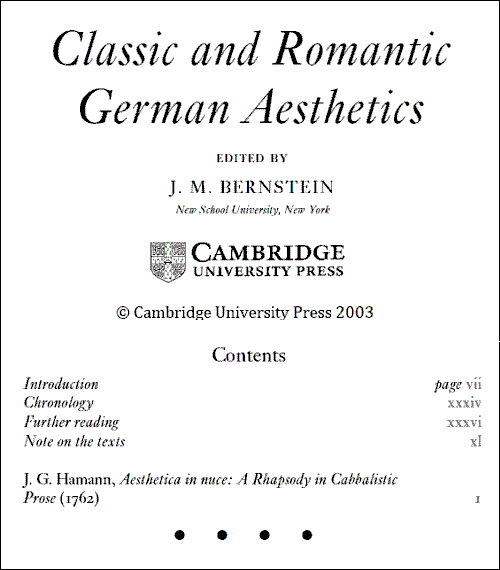
See also posts from St. Andrew's Day now tagged "In Nuce."
Comments Off on Aesthetics: A Reading

The St. Andrews in Focus article is not available online.
That periodical is not affiliated with the University of St. Andrews.
A University of St. Andrews source — "Honorary Reader" Peter Maxwell-Stuart —
contradicts the above tale about the Archbishop of St. Andrews.
See his scholarly account in the following book —

See particularly pages 98, 99, 100, 101,
102, 103, 104, 105, 106, and 107.
Comments Off on Anti-Christian Rumor at St. Andrews
Wednesday, November 8, 2017

See also ICERM and Dyadic in this journal.
Comments Off on Dyadic
Tuesday, November 7, 2017


"Read something that means something."
— New Yorker ad
 .
.
Comments Off on Polarities and Correlation

The above square is from
a post of Aug. 30, 2006.
Comments Off on The Seventh Symbol Revisited
Monday, November 6, 2017
"Colorless green ideas sleep furiously is a sentence
composed by Noam Chomsky in his 1957 book
Syntactic Structures as an example of a sentence
that is grammatically correct, but semantically nonsensical."
— Wikipedia article on the sentence
Buddhist midrash from The New York Times today —
"For example, psychology has lately started to let go of its
once-sharp distinction between 'cognitive' and 'affective'
parts of the mind; it has started to see that feelings are so
finely intertwined with thoughts as to be part of their very
coloration."
See also other recent Log24 posts now tagged Coloration.
Comments Off on The Chomsky Koan
… According to a comment on the latest Instagram
post of Oslo artist Josefine Lyche —
🏰💎.
See also "Castle Rock" in this journal.
Comments Off on Castle Rock…
A midrash on the previous post, "Spectrum at the Center" . . .
In lieu of Judy Garland singing "Somewhere Over the Spectrum,"
a flashback to a post from 2013 —
Comments Off on Babble On
Sunday, November 5, 2017

The top article in the New York Times Wire list below is about
a new play that opened at the Sheen Center on All Souls' Day.

Comments Off on Spectrum at the Center
A model of the smallest projective line:

Related drama: See Wicker Man in this journal.
Comments Off on Trinity
Saturday, November 4, 2017
Figures from a search in this journal for Springer Knight
and from the All Souls' Day post The Trojan Pony —


For those who prefer pure abstraction to the quasi-figurative
1985 seven-cycle above, a different 7-cycle for M24 , from 1998 —

Compare and contrast with my own "knight" labeling
of a 4-row 2-column array (an M24 octad, in the system
of R. T. Curtis) by the 8 points of the projective line
over GF(7), from 2008 —

Comments Off on Seven-Cycles in an Octad
Friday, November 3, 2017
(Continued from the previous post, The Trojan Pony.)


Comments Off on You Can Ride
Thursday, November 2, 2017
From a search in this journal for Springer Knight —


Related material from Academia —

See also Log24 posts from the above "magic" date,
December 4, 2014, now tagged The Pony Argument.
Comments Off on The Trojan Pony
Thanks to Emily Wilson and Wyatt Mason for an excellent
discussion in today's online New York Times on Wilson's
new translation of Homer's Odyssey (to be released Nov. 7).
A detail from the Wilson-Mason article —
See as well …

Comments Off on Of Many Changes
Schoolgirl Problem


"Buy this image" . . . Or not.
Related material from the date of the above photo —

For related drama, see "Child's Play" in this journal.
Comments Off on History of Mathematics for All Souls’ Day
Wednesday, November 1, 2017
From Tony Phillips's American Mathematical Society column
for November 2017 —
" It is significant that the authors chose to place this announcement
of their results not in a mathematics journal but in one aimed at a
much larger scientific audience; their writing is appropriately
expository, especially in the introduction. Nature itself ran an
assessment of the paper in their 'News and Views' section,
October 4: 'Mathematics: A pariah finds a home,' by Terry Gannon.
Gannon sets the stage, again in terms suitable for wide consumption,
and sketches out the story. He ends 'It is always difficult to gauge
the importance of a mathematical result without the hindsight
that many years brings. Nevertheless, Duncan et al. have shown us
a door. Whether it is to a new closet, house or world, we cannot yet say,
but the results are certainly unexpected, and no one will think of
the pariahs in the same way again.' "
See as well Log24 on the above date — Text and Context.
Comments Off on Many Years
"Nowdays, Halloween involves plastic figures of ghosts and bats
bought from the supermarket; this is driven by commerce and
in some people’s view is an American import. But it is clear that
this time of year was traditionally regarded as one where the barrier
between this world and the other was low, and supernatural
manifestations were to be expected."
— Peter J. Cameron today.
Remarks related to another "barrier" and vértigo horizontal —

See also a search for Horizon + "Western Australia" in this journal.
From that search: A sort of horizon, a "line at infinity," that is perhaps
more meaningful to most Cameron readers than the above remarks
by Borges —

Comments Off on Cameron on All Saints’ Day
For the "Aleph" of the title in the seal of
the College of the Desert, see the final post
in a search for the College in this journal.
A better-known Aleph appears in a story by Borges.
See Borges + Aleph in this journal.
For the "Zahir" of the title, see another story by Borges
and the coin scenes in the films "No Country for Old Men"
(2007) and "Mojave" (2015).
The word "Zahir" has appeared previously in this journal
in a post of January 11, 2011, Soul and Spirit.
Comments Off on Aleph Meets Zahir














